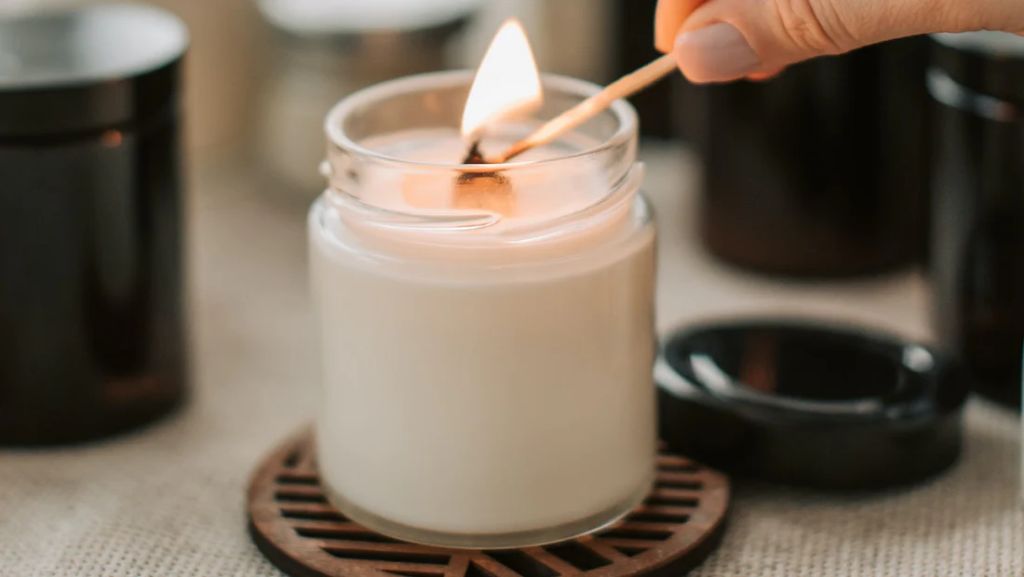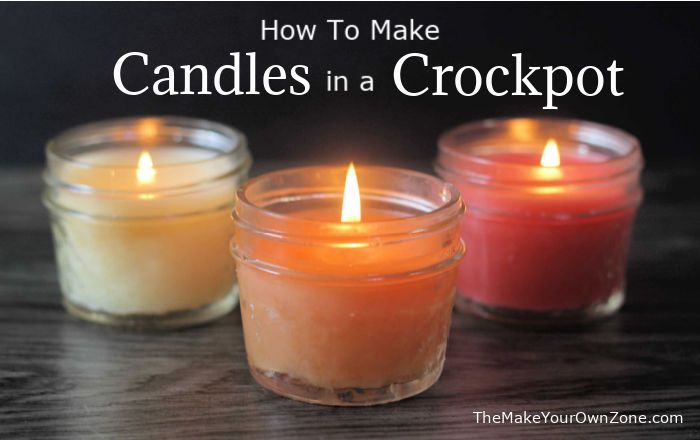Are Soybean Wax Candles Safe?

Soybean wax candles have become a popular alternative to traditional paraffin wax candles in recent years. Made from natural soybean oil, these candles are often touted as a cleaner burning, non-toxic option. However, questions remain around how safe soybean wax candles really are. While they avoid some of the concerning chemicals present in paraffin candles, soy wax may introduce potential issues like allergies, toxin release when burned, and wick toxicity. This article will examine the benefits and safety issues around soybean wax candles to determine if they are truly a healthy choice.
What Are Soybean Wax Candles?
Soybean wax candles are made from soybean oil. Soybean oil is extracted from soybeans and then hydrogenated to convert the oil into a solid wax. This wax alternative was developed in the 1990s as a more environmentally-friendly option compared to paraffin wax, which is a petroleum byproduct.
The modern history of soybean wax candles dates back to the early 1980’s, and can trace it’s roots back to the early 9th century in Japan (Source). Soy wax was developed as a renewable and cost-effective beeswax alternative by candle makers like Michael Richards and Peter Cocconi in the 1990s (Source). In the U.S., agricultural chemists began developing soybean wax in the 1990s as a softer and slower burning alternative to paraffin (Source).
Benefits of Soybean Wax
One of the biggest benefits of soybean wax is that it is a natural, renewable resource. Soybeans are an agricultural crop grown annually, so the supply of soy wax can be replenished year after year. This makes it more sustainable than paraffin wax, which is a petroleum byproduct. Soy wax is also biodegradable, meaning it will break down and decompose over time, rather than sitting in a landfill indefinitely like paraffin wax (1).
Soy wax burns cleaner than paraffin wax, producing less soot and smoke. This makes soy candles nicer for indoor use. The natural soy wax also contains no toxins, carcinogens or pollutants typically found in paraffin wax. Soy candles are considered to have a more natural, pleasant scent as well (2).
Overall, the renewable, biodegradable nature of soy makes it a more eco-friendly option. Soybean crops are good for the environment, for farmers, and for supporting local agriculture. When looking for safe, natural candles, soy wax is an excellent choice.
Sources:
(1) https://www.pureintegrity.com/blog/soy-wax-healthier-choice-candle-addiction.html
(2) https://www.waxpoeticcandlebar.com/blog/why-soy-wax
Potential Safety Concerns
While soybean wax candles are often marketed as a natural, non-toxic alternative to paraffin candles, there are some potential safety concerns to be aware of.
Soot Production: All candles produce some soot when burned, but soy wax candles may produce more soot than paraffin candles. According to one study, soy candles produced over three times more soot than paraffin candles when burned (https://pantryfuel.com/blogs/blog/why-we-will-never-burn-soy-candles-again). Breathing in candle soot can irritate the lungs.
Lead in Wicks: The metal core wicks used in some candles can contain traces of lead. Lead exposure can cause serious health issues. Choose candles with lead-free cotton, paper, or wood wicks (https://www.greenerlyfe.com/blog/are-soy-candles-safe-10-top-safety-tips-included/).
Allergies: People with soy allergies may react to the proteins in soybean wax candles. Reactions can include respiratory symptoms, rashes, or anaphylaxis. Those with soybean allergies should avoid soy candles.
Testing for Toxins
When looking into the safety of soybean wax candles, one major concern is the potential toxins that may be released while burning. Some key toxins to test for include lead, which may be present in the wick, and soot particles released into the air.
Studies have analyzed lead content in candle wicks, as lead exposure can cause health issues especially in children. One study tested lead levels in the wicks of candles made from paraffin, soybean, beeswax and other waxes. The results showed detectable levels of lead in many wicks, however soybean candle wicks had minimal amounts compared to paraffin and beeswax candles (Candle Science & Testing).
Another potential hazard is soot emissions, which can irritate lungs if inhaled. A comparison study measured soot released by soybean, paraffin, and beeswax candles. They found soybean candles produced less soot emissions than paraffin, but more than beeswax (Why We Won’t Ever Burn Soy Candles. – Spokane). Proper wick maintenance can reduce soot production.
Overall, testing shows soybean wax candles can release some concerning toxins when burned, but at lower levels than paraffin wax. Proper wick selection, trimming, and burning methods can minimize potential toxins.
Allergies
Soybean allergy is one of the more common food allergies, affecting around 0.4% of American children and 0.3% of adults according to research (source). The proteins in soybeans that commonly cause allergic reactions are Gly m Bd 30K, Gly m Bd 28K, and Gly m Bd 60K. However, research suggests that soybean wax candles are unlikely to cause allergic reactions in those with soybean allergy.
This is because the allergenic proteins are removed during processing and refining of the soybean oil to make wax (source). One study found no detectable amounts of soy proteins in the emissions from burning soy wax candles. Additionally, allergen cross-reactivity between soybean oil and soybean itself appears to be very low. Most soy-allergic individuals can tolerate refined soy oil and soybean wax.
However, those with soybean allergy should still exercise caution when burning soy candles, as allergen content can vary by brand. Starting with unscented or beeswax candles first is recommended. Discontinuing use of any candle that causes allergy symptoms is also advised.
Proper Burning
Properly burning soybean wax candles is crucial for safety and maximizing burn time. The main things to focus on are trimming the wick before each use and ensuring proper ventilation.
It’s recommended to trim the wick to 1⁄4 inch before lighting soybean wax candles. This helps prevent issues like tunneling and mushrooming of the wick, which can lead to uneven burning, excess smoke, and shortened burn times. According to Eartherella, “Make sure you trim the wick to a 1/4\”. If you get black discoloration around the rim of your candle, your wick is too long.”
Providing good ventilation around soybean wax candles is also key. Allow at least 4-6 inches of clearance on all sides of the candle when burning. Burning soy candles for more than 4 hours at a time can cause the wick to mushroom and smoke. As Night Sky Candle recommends, “We recommend burning our candles for no more than 4 hours at time. If a candle is burned for more than 4 hours it can cause the wick to start mushrooming.”
Following these simple proper burning guidelines will help ensure safe usage and enjoyment of soybean wax candles.
Non-Toxic Wicks
Choosing the right wick is crucial for ensuring soybean wax candles burn cleanly and safely. The best wicks for soybean wax are typically made from natural materials like cotton, hemp, or beeswax.
100% cotton wicks are a popular choice as they burn slowly and evenly without releasing toxins. High quality brands like EricX Light offer organic cotton wicks pre-waxed with beeswax so they burn cleaner.
Hemp wicks are another good option, as they are sturdy, sustainable, and release very little soot. Arctic Wicks makes an excellent beeswax-coated hemp wick that is non-toxic and clean burning.
Pure beeswax wicks are also safe, as beeswax contains no petrochemicals or toxins. The natural waxes allow slower, cooler burning while being biodegradable and non-toxic.
The key is to avoid metal-core wicks that release heavy metals, as well as synthetic wicks made from materials like rayon that pollute the air. Choosing the right natural fiber wick ensures clean, safe burning.
Soybean Wax vs. Paraffin
Soybean wax and paraffin wax have some key differences when it comes to safety and emissions. Paraffin wax is derived from petroleum, while soybean wax comes from soybeans, a renewable resource (https://fireflyfuel.com/soy-vs-paraffin-what-are-the-key-differences).
When burned, paraffin wax releases compounds like toluene and benzene, which are known carcinogens. Soybean wax does not release these compounds when burned, making it a safer option (https://lonestarcandlesupply.com/soy-vs-paraffin).
In terms of emissions, paraffin wax candles release more soot into the air compared to soybean wax candles. The soot released from paraffin can stain walls and surfaces. Soybean wax produces very little soot when burned, making it a cleaner option.
Overall, soybean wax is considered safer and more environmentally-friendly than paraffin wax when it comes to candle-making. The emissions from soybean wax are far less harmful. For those concerned about safety and air quality, soybean wax candles are the better choice.
Conclusion
Overall, soybean wax candles can be considered safe options if used properly. The key tips for safe use include:
- Burning soy candles in a well-ventilated room and never leaving them unattended (https://www.unplugsoycandles.com/pages/soy-candle-care)
- Keeping wicks trimmed to 1⁄4 inch to prevent excessive smoke (https://www.koch.com.au/soy-candle-faq)
- Avoiding drafts or burning near flammable materials
- Storing soy candles in a cool, dry place and keeping covered when not in use
- Testing for any allergy triggers before prolonged use
While no candle wax is completely without risk, soybean wax candles avoid some key safety issues of paraffin wax. With proper precautions, soybean wax can be a safe, natural alternative for home use.



